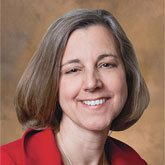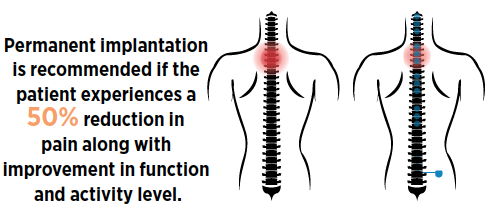New spinal cord stimulation products are on contract
Spinal cord stimulation (SCS), a treatment available for chronic pain of the trunk and extremities, is relatively safe and used in approximately 34,000 patients worldwide each year. This system consists of leads that attach to the spinal column, a pulse generator and a wireless remote control.

A new understanding
Although SCS has been approved by the Food and Drug Administration (FDA) since 1987, the mechanism of action is not fully understood. Broader theories on SCS effectiveness have resulted in innovative technology with improved outcomes for patients. HealthTrust offers products on contract in this category.

Originally, SCS was understood using gate control theory, where electrical pulses sent into the spine block the sensation of pain to the brain by inducing paresthesia (the tingling, “pins and needles” sensation). This approach had some success, but the paresthesia reduced positive outcomes. “Some patients would stop using this therapy because they found the paresthesia to be more adverse than treating the pain with alternative methods,” says Karen Bush, MSN, FNP, BC, NCRP, Director of Clinical Research & Education at HealthTrust. Permanent implantation is recommended if the patient experiences a 50% reduction in pain along with improvement in function and activity level.

Communication is key
But recent research reveals that SCS can release natural pain-relief substances, restoring normal pain inhibition pathways without paresthesia. Two technologies have come to market that reflect this development: burst stimulation, which is proprietary to Abbott Laboratories, and high- frequency stimulation, which is proprietary to Nevro. “These new technologies do not cause paresthesia, which makes it more comfortable and desirable for the patient,” says Bush. “Clinical trials have shown these technologies to be noninferior, and in some industry-sponsored studies, preferred or superior to low-frequency tonic stimulation.”
One significant challenge with SCS therapy, notes Bush, is ensuring adequate communication between the providers involved in a patient’s care. For a patient to be considered for a permanent SCS system, a trial device is placed in the spine (the generator is maintained externally) for five to seven days, often by a community provider. Permanent implantation, by which the generator is placed in the body, is recommended if the patient experiences a 50% reduction in pain along with improvement in function and activity level. The permanent implantation can be done in the hospital. Communication between the community provider and implanting physician is crucial for continuity of care, as well as reimbursement for the permanent device. “The hospital’s challenge is that it needs documentation from the community provider for the procedure to be appropriately reimbursed through many of the payer sources. So there has to be a communication system established between the two entities,” explains Bush. Considering the positive outcomes associated with SCS therapy, overcoming this challenge can be well worth it.
For more information about SCS products on contract, contact your HealthTrust account manager.
Share Email On-contract product, Pain Management, Q1 2020





